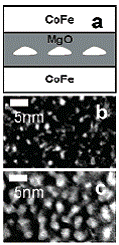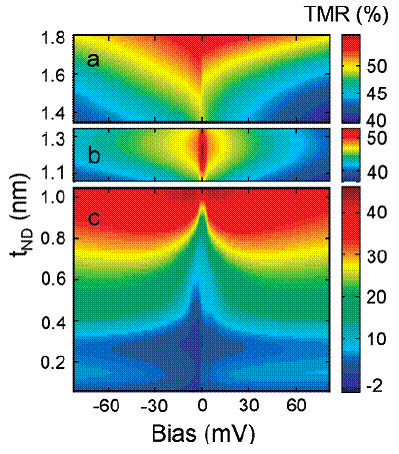PROJECT
Magnetic Tunnel Junction
Recent advances in generating, manipulating, and detecting spin-polarized electrons and their electrical current make possible entirely new classes of spin-based sensor, logic, and storage devices.
An important such device is the magnetic tunnel junction (MTJ) which has been under intensive study in recent years: important applications include nonvolatile memory cells for high performance magnetic random access memory (MRAM), and magnetic field sensors for high density hard disk drive read heads.
The essential element of a magnetic tunnel junction (MTJ) is a sandwich of two thin ferro- or ferrimagnetic layers separated by a thin insulating spacer layer which forms a tunnel barrier. MTJs with other barrier materials, such as titanium oxide (TiO2), aluminum nitride (AlN), tantalum oxide (TaOx), strontium titanium oxide (STO), and magnesium oxide (MgO)have also been studied. However a detail understanding is still under investigation regarding why one barrier gives better tunneling magnetoresistance (TMR) than others.
 |  |
| Fig.1 | Fig.2 |
Recently, extremely high TMR values, of up to 600% at low temperature, have been reported in practical MTJ devices. However, many aspects of the tunneling magnetoresistance phenomenon are poorly understood, although it is clear that the fundamental origin of TMR is the spin polarization of the tunneling current. In particular, it is now generally known that the magnitude of the spin polarization of tunneling currents in magnetic tunnel junctions not only is related to the spin-dependent electronic structure of the ferromagnetic electrodes but also is considerably influenced by the properties of the tunnel barrier and its interfaces with the magnetic electrodes. Whereas the maximum tunnel magnetoresistance of devices using amorphous alumina tunnel barriers and 3d transition-metal alloy ferromagnetic electrodes is about 70% at room temperature, using crystalline MgO tunnel barriers in otherwise the same structures gives tunnel magnetoresistance values of more than 600% at room temperature. We try to understand the fundamental characteristics of MTJs.
[Fig.1] Illustration of a magnetic tunnel junction device with a discontinuous layer deposited in the middle of the tunnel barrier, forming a layer of nanodots.
[Fig.2] The bias voltage dependence of dc TMR at 2.5 K as a function of the nanodot layer thickness. It shows crossover from Kondo-assisted suppression to co-tunneling enhancement of tunneling magnetoresistance
